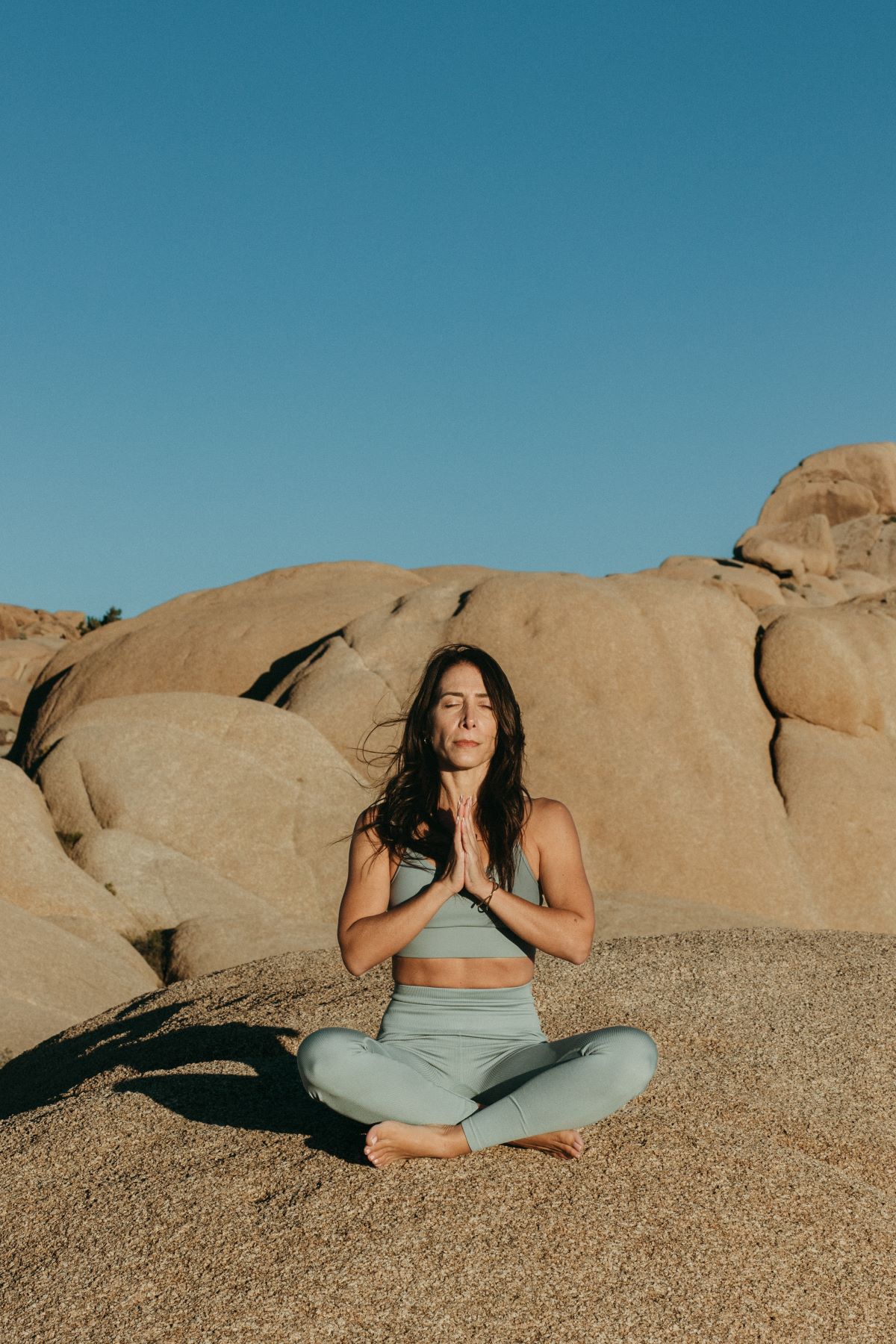By Cathy Madeo – Yoga Expert
Rooted in Buddhism, mindfulness is the practice of living in the present moment without judgment or attachment. Like any skill, learning mindfulness takes practice. When people first start out, they’re often frustrated by how active their minds are—the endless to-do lists, the negative self-talk, the constant worries. But noticing the mental chatter is actually the first step! Instead of trying to stop your thoughts, mindfulness teaches you to redirect your attention to what is happening now. whether you are paying attention to your breath, your body, or the task at hand. Over time, the simple act of returning to the present moment creates clarity, calm, and connection.
The good news is that there are so many simple techniques to help you bring your awareness to the present moment and start living mindfully.
Photo: Irving Martinez
Benefits of Mindfulness
The benefits of mindfulness go even further than feeling calm. Research shows that even a few minutes of mindfulness practice a day can reduce stress, improve focus and help regulate our emotions. Studies have found that mindfulness reduces activity in the amygdala, the part of the brain responsible for stress, while strengthening the prefrontal cortex, which supports focus and regulates emotions.
But science just confirms what we’ve known for centuries: that when we’re present, we feel better. We are more focused, respond with emotional intelligence and connect more deeply with the world around us. Mindfulness also supports our physical health by improving sleep, speeding up our recovery from stress and even lowering blood pressure.
How to practice

Photo: Irving Martinez
The great thing about mindfulness is that you don’t need a quiet place or equipment to practice. It’s more about being aware of what’s already happening right now.
The simplest way to start is to notice your breathing. Take a few slow breaths and notice the air going in and out of your nose, the rise and fall of your belly and chest. When your mind wanders (and it will), guide your attention back to your breath without any judgment.

Photo: Sarah Sideo
You can also try a technique called “noting,” naming what you’re experiencing as it happens. This technique is ideal for everyday tasks. For example, while washing the dishes, you might say to yourself, “I feel the warm water in my hands” or “I hear the sound of running water.” This storytelling helps ground you in the present moment.
Another method is the 3-3-3 method. This can help reduce stress. Notice 3 things you see, 3 things you hear, and 3 things you feel in your body. It’s an easy way to distract yourself when your mind starts racing.
Remember, the goal is not to stop thinking. It’s about bringing your mind, again and again, to the present moment. With practice, it will take less effort and feel more natural.
Mindfulness in motion
Movement is one of the most natural ways to practice mindfulness. Whether you’re walking, stretching, lifting weights, or flowing through yoga, being aware of how your body feels in motion helps strengthen the mind-body connection.

Photo: Irving Martinez
When we move consciously, we begin to notice sensations, our muscles engaging, the quality of our breath and the mat under our hands. Instead of trying to get to the end of a workout or rushing for the next exercise, we start listening to what our body is communicating.
In yoga, I often remind students to feel the sensations in their bodies without judgment. Tightness isn’t “bad” and ease isn’t “good.” both just provide information. The more we can stay present with our senses, the more we can learn to respond to our body’s signals, and thus the more purposeful and mindful our movements become. From there, we can pull this practice off the mat and allow it to expand into all areas of our lives.
Mindfulness is not about perfection. it’s a matter of practice. Each time we return to the present moment, we strengthen our awareness and connection to ourselves. Over time, these moments of presence grow larger and deeper, shaping the way we move, breathe, and live. Mindfulness ceases to be something we do and begins to be who we are.
About the author
Cathy Madeo is a yoga expert and founder of Cathy Madeo Yoga, a global online yoga school that educates and empowers thousands of yoga students and teachers around the world through online yoga classes and Yoga Teacher Trainings. You can learn more at and follow her on Instagram @cathymadeoyoga
Refusal
The Content is not intended to be a substitute for professional medical advice, diagnosis or treatment. Always seek the advice of your doctor or other qualified health care provider with any questions you may have about a medical condition.
